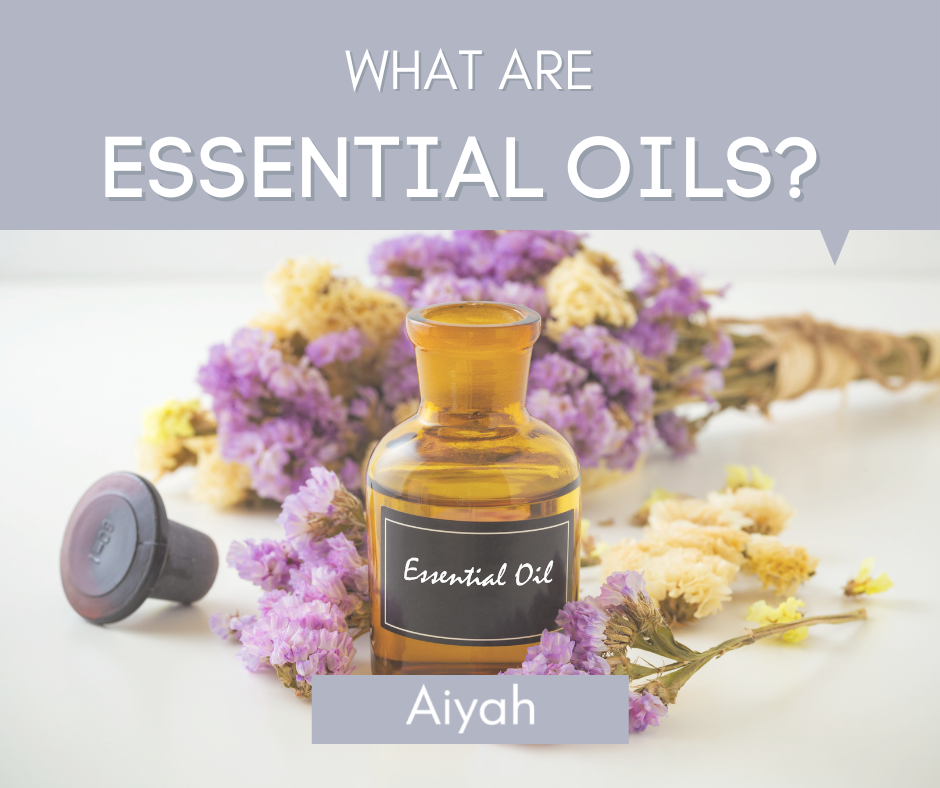Defining Essential Oils
“An Essential Oil is a compound essence that is extracted from a plant in liquid form. It is the true life essence of a plant in concentrated form of aromatic molecules. Essential oils are usually volatile which means they evaporate because of their molecular weight, therefore, they give off an odorous smell similar to that of the plant species they came from. These oils are complex and they contain hundreds of chemical compounds that have distinct properties and therapeutic uses in the art we know as Aromatherapy.”

Essential oils are extracted from plant matter usually from the different parts of a plant by a method called extraction. Some parts of plant anatomy which essential oils come from are:
Roots and Rhizomes - it’s the underground part of the plant used for stability and anchorage.
Stems - this gives structure to the leaves and flowers of the plant.
Leaves - these are involved in photosynthesis and can store nutrients.
Flowers - these are the biological reproduction center of a plant containing fragrance and scent.
Fruits and Seeds - fruits of the plant contain many of the plant’s nutrients and enzymes.
These are all used in various forms in the production of essential oils from different botanical species.

It is said that the term “Essential Oil” is derived from the word “Quintessence” which can be described as the spirit or life force of the plant.
Some other names that essential oils have been known by are fragrant oil, essence, volatile oil, aromatic oil, and aetheroleum.
In order to obtain this life force humans developed a way to extract and distill and use these properties.

Some extraction methods include:
Expression Process: A process by which essential oil molecules are obtained by crushing and compressing plant material to extract.
Distillation process: Vaprosing the essential oil in the form of gas from the plant material by the use of water, steam and heat for extraction.
Solvent Extraction: A gentle form of extraction used to seep an essential oil out into a carrier to obtain its fragrance and smell.
Some byproducts of solvent extraction include:
concentrates, absolutes, pomades, extracts, balsams, gum resins, resinoids, infusions, oleoresin, and tinctures.

Essential oils are thought to be significant to the health and survival of a plant. As in plant have the ability to produce essential oils for a number of reasons including:
- To attract pollinators
- To defend themselves
- To provide protection from microbes and fungus
- For allopathic interaction
- To heal itself
- For seed dispersal
- Attracting herbivores
- Improving the tolerance to environmental factors
Like nature’s own first aid kit contained inside the plant with all the ingredients necessary for the plant's survival.
Some of the structures in a plant responsible for storage of these essential oils for secretion and accumulation include secretory cells, cavities and ducts, glands, epidermal cells, flower parts and oil cells.

Essential oils are regarded as biologically useful to humans because they cause the same properties available to the plant, to help a human host when used.
Humans have a cell structure similar and compatible to these organic compounds and chemicals used in plants and therefore if extracted, we can harness the therapeutic and naturally occurring properties of these wonderful plant species.
Essential oils have enormous potential for application for humans when taken into account each plant species has multiple chemical constituents in its make up and each chemical has a therapeutic action and properties attached to itself. You can see why essential oils are valuable and useful in healing and first aid, as well as in application for beauty, hygiene and for the mind.
Essential oils are nature’s gift and a first aid kit we can return to again and again.

